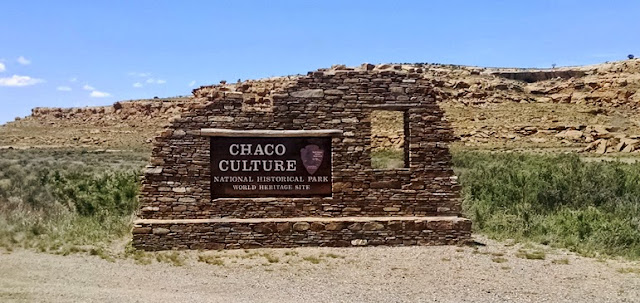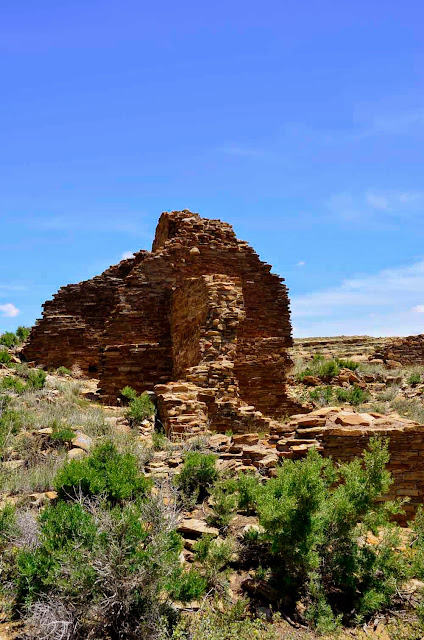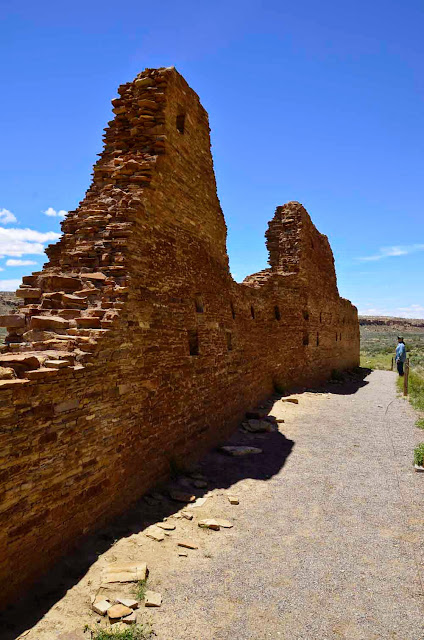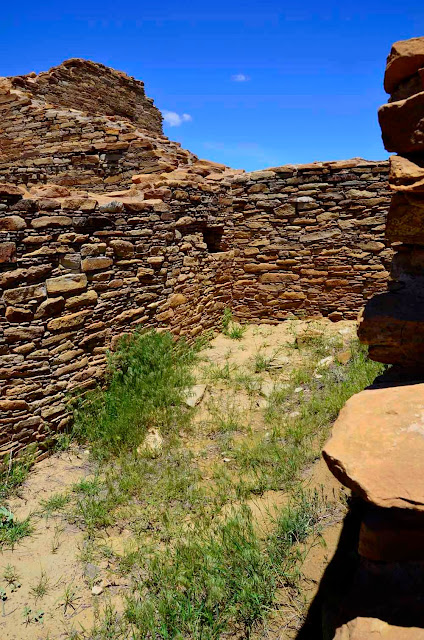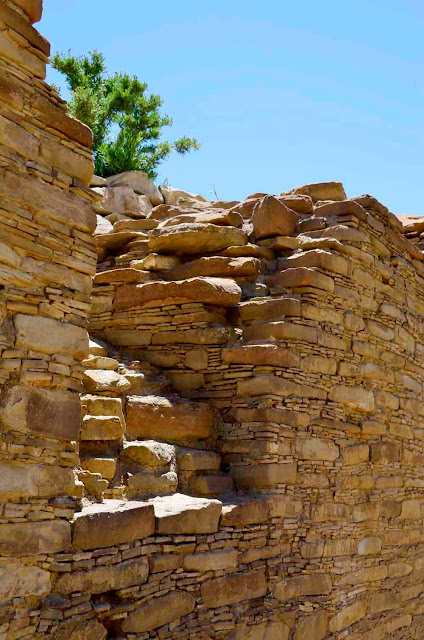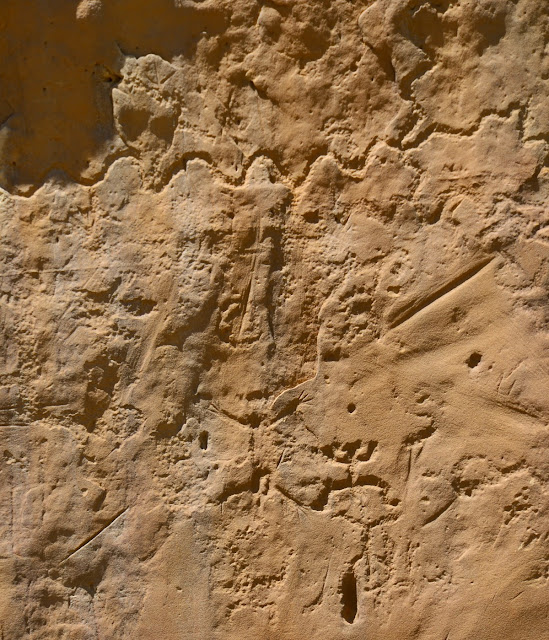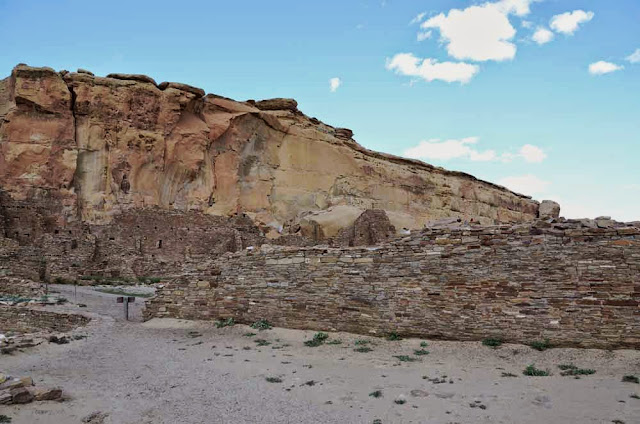One day is not long enough to visit the Chaco Culture National Historical Park. We had planned to go back a second day but then it rained. And rained.
There are two issues: first is that the park is miles from anywhere. Second is that while the roads in the park are paved, the roads to get to the park pass through miles of the Navajo Nation which are not as well maintained.
They degrade from paved to gravel.
Then they go from gravel to dirt. The kind of dirt full of ruts that turns to mud when wet. Plus there are washes subject to flooding.
Even with the jeep we were worried about getting stuck after the deluge.
Fajada Butte marks the opening of the canyon and the start of your journey through time.
__________________________
Hungo Pavi
The first of the ruins we visited, Hungo Pavi hugs a cliff in a side canyon, Mockingbird Canyon.
This "Great House" contained about 150 rooms, a kiva, and a plaza. It has not been excavated or reconstructed.
One of the Chaco staircases leads up to the mesa. Multiple houses/pueblos existed on top of the mesa as well as down in the canyon.
A close-up of the staircase. The steps are too large to walk up on foot. They must have been used to climb more like a ladder.
You can see where the posts between floors were in the above photo.
Note the thickness of the walls.
More ceiling/floor timbers. Skilled masonry work.
Detail of wall interior.
Beautiful view of the rocks and cliff from the pueblo.
Above: a void where a beam ran between floors.
Below: a window opening. It is easy to see the difference in construction.
__________________________
Chetro Ketl
The second-largest of the great houses, Chetro Ketl covers around three acres.
The diameter of the great kiva is 62.5'.
There are numerous smaller kivas and round towers.
Originally three stories tall, here we look down into an excavated lower floor.
Love the masonry here with the small pices between the larger stone blocks.
Outlying rooms hug the cliff.
__________________________
Petroglyphs
A path along the canyon edge leads from Chetro Ketl to Pueblo Bonito. Many petroglyphs have been etched into the sandstone of the cliff face.
Man surprised by small figure next to him?
View to top of the cliff.
Snake!
We don't see the geometric designs found by the Rio Grande. Spirals seem to be the order of the day. And wavy lines. A representation of rivers?
Detail from above.
Below: detail of figures at bottom right.
We were unsure of what the figure to the right was. Not a sheep or a deer or a bison and before the Spaniards brought horses. Further research led to the conclusion that it is a dog. At this time both dogs and turkeys were domesticated and were an important part of puebloan life.
Man throwing up hands in surprise at snake.
Bird tracks, river. Plants? Details below.
This column will someday fall. A similar but even larger column separated from the cliff and fell onto the corner of Pueblo Bonito in 1941.
__________________________
Pueblo Bonito
The broken remnants of the column that fell in 1941.
Three acres, 800 rooms. The largest of the Chacoan Great Houses.
Multiple kivas and a plaza large enough to have held thousands for ceremonies.
Arrow leads down to a series of rooms which you can walk through.
In the interior, three stories high. Now open air but it is easy to see where the original ceiling was.
Fascinating corner window/opening.
Inside the room I was peeking into you could see the original ceiling and plaster.
A final look back.
To be continued another season or another year . . .



